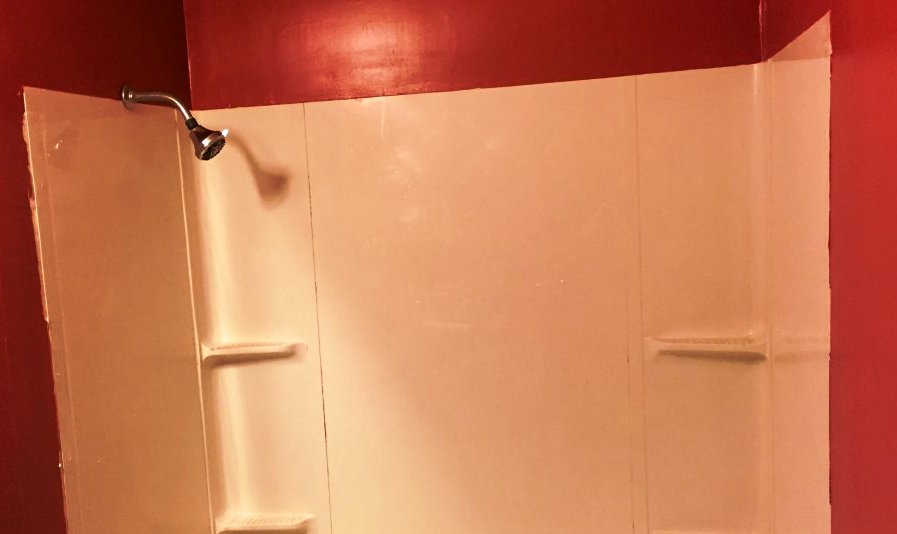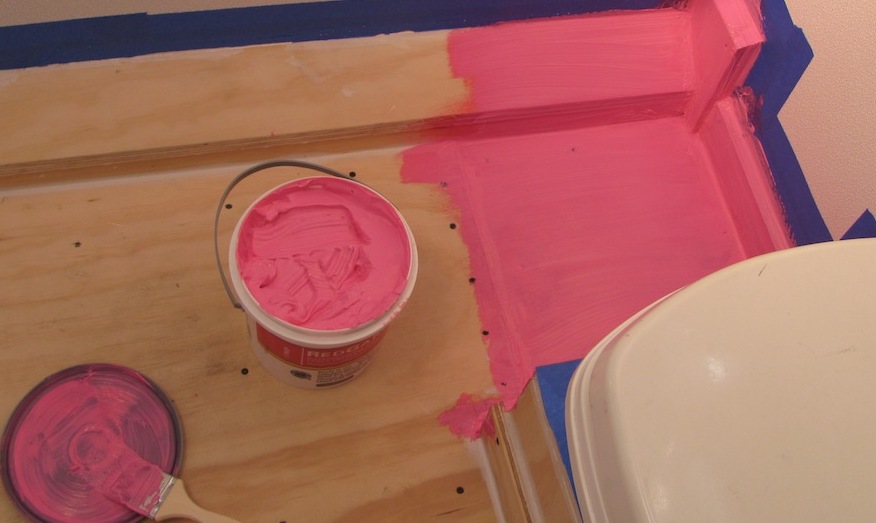Redgard vs. Dry Pack

There are several names for dry pack mortar, including deck or floor mud. It is a combination of water-hydrated Portland cement and sand.
Dry pack is useful for many tasks, including filling holes, repairing cracks, and performing general repairs on small, typically deeper-than-wider sections of material. Employing a dry pack has numerous advantages.
Since you won’t need to mix sand and cement on the job site, it’s cost-effective and time-saving. Additionally, it has applications that are both internal and external.
Among all the things dry pack can be used on, are you planning to cover it with Redgard? Continue reading to find out if using Redgard instead of dry pack is a good idea and some potential problems.
Redgard: What Is It?
Redgard is a membrane used in stone and tile installation projects that provides waterproofing and crack prevention. Once it cures, this product stops tiles and stones from cracking and forms a waterproof barrier. Redgard is among the greatest materials for shower trays because of these qualities.
Redgard is favored by many contractors due to its simple application process. All you’ll need is an airless sprayer or roller.
Trowels are used by some construction experts. Its fast-drying formula completes the task considerably faster. Redgard works well on many different types of surfaces, which brings us to our topic for today: is it possible to use Redgard over dry pack?
Will Dry Pack Work for Redgard?
Redgard, also referred to as floor mud, can serve as a waterproof membrane over a dry pack. Redgard is primarily used to waterproof shower pan dry pack because of its ability to prevent cracks and provide waterproofing.
As beneficial as Redgard is at providing waterproofing, there are certain drawbacks to choosing Redgard over a dry pack.
Initially, Redgard ought to be reserved for a backup plan in the event of water damage. When installing a shower pan, you must have a vinyl liner. It is this that will be responsible for waterproofing. All that the Redgard will do is extend assistance.
Using Redgard over a dry pack raises another issue because it may result in a transient moisture sandwich.
Applying Redgard to the dry pack will probably create a moisture sandwich if you are using a dry pack over the liner and intend to install tiles on top.
Taking into account the attributes of each of these products, as previously stated It’s highly likely that you’re working on a shower pan or something wet and/or damp, like a kitchen.
Water that is exposed to this area will seep through the grout or any gaps in the tiles that haven’t been properly sealed, reaching the dry pack.
It will locate the dry pack that has been Redgard waterproofed when the aforementioned occurs. As a result, it won’t leak through the floor mud or dry pack. To make matters worse, you are going to be in for a major surprise if there are no weep holes or if they are blocked.
Between the tiles and the waterproofed dry pack, moisture will be kept in place. That might result in the growth of mold, which is a very serious problem.
As much as you might believe, covering the dry pack with Redgard adds an additional layer of protection. It might have a bad effect on you later on.
Does Redgard Provide Additional Protection Against Moisture on the Dry Pack?
Indeed. Redgard is an excellent waterproofing product that will prevent the dry pack from getting wet. Additionally, it will stop cracking. Here are a few benefits of utilizing Redgard.
But while you’re at it, you should assess what you plan to do over the dry pack next. You must refrain from putting moisture in between if you intend to lay tiles or stones on top.
When using Redgard, is it appropriate to use a vinyl liner underneath the dry pack?
Investing in additional water resistance is perfectly acceptable. But you should reconsider if there are any risks.
The majority of shower pan installation projects require the use of a vinyl liner, which needs to be angled to channel moisture into the drain. You don’t need to add Redgard or anything else on top if you’ve already installed this vinyl liner.
Redgard can be used to seal off moisture on the shower walls. However, it’s best to leave it as is for the pan.
Should You Install Weep Holes Next To The Dry Pack?
Weep holes need to be installed when using a dry pack in areas that are frequently exposed to water. Water that seeps through the grout or tiles can be helped to drain by weep holes.
The dry pack will be exposed to a lot of water without weep holes, and it may eventually lose its structure. If you have applied to Redgard, this might not take place.
However, the moisture that is trapped between the tiles and the dry pack will remain. Thus, you will still need to handle a problem.
Is Redgarding Better Than Dry Packing?
It’s a good idea that you want to fortify your bathroom project with additional water resistance. But sometimes using Redgard isn’t really necessary. Without the Redgard, the floor bed can function as intended.
As long as the weep holes are functioning and the deck mud is slopped to direct all of the water toward the drain, everything ought to function flawlessly. You won’t have to worry about your shower pan getting wet if it also has a vinyl liner.
In addition to sandwiching moisture between the dry pack and tiles, Redgard application will be more expensive and time-consuming.
Everything would go fairly quickly if you were to install the shower pan without using Redgard. However, since Redgard is involved, you will have to set it aside and allow it to heal.
Redgard can also help the walls in your shower, which is something else. Redgard is a great waterproofing product that keeps water out of walls and stops mold from growing there. Use Redgard on the walls if you must; that should be sufficient.
Is Redgard Equivalent to Liner?
As you can see from the previous discussion on Redgard’s suitability for use over a dry pack, the liner serves a similar purpose in waterproofing the shower pan. You might be wondering if Redgard can be used in place of liner.
Let us first explain what shower liners are. Shower liners are placed between tiles and mortar. They serve as a barrier against water seeping through the floor.
Although Redgard is an excellent waterproofing material, shower liners cannot be replaced in the same area. Redgard is also used in this area.
Redgard’s advantage is that it’s an extra layer of defense. The first line of protection against water is the liner. In a shower, there is typically a lot of water on the floor.
Redgard can only provide a transient barrier against moisture. A liner is a better long-term option for water protection. The majority of plumbing councils and regulations also advise using liners.
How Can Redgard Be Applied Over Dry Pack?
In the event that you have decided to use Redgard instead of dry pack, you must apply it properly. Here’s a quick tutorial on applying Redgard to a dry pack.
- Step 1: Compile Necessary Materials
You’ll need a few items for this project in addition to the Redgard itself. Redgard is applied with a paint sprayer or a roller.
Getting these products would be ideal if you made the necessary arrangements. Additionally, you need PPEs, such as masks and gloves.
- Step 2: Use Redguard
Redgard application is not a difficult procedure. The application is preceded by certain preliminary steps. The dry pack needs to be thoroughly cleaned first.
Contaminants have the potential to prevent the Redgard from curing. Additionally, make sure the dry pack is free of any water-filled areas.
After finishing that, you can apply the dry pack or deck mud with a roller or air sprayer. A more consistent finish can be ensured with a roller.
Give it at least two hours to cure, and make sure the entire surface is covered. When it cures, it should turn a bright red color. After it dries, add one last coat.
A professional tip is to not thicken Redgard when applying it over a dry pack. An excessively thick redgard can crumble at the bottom, which could reduce the usefulness of this product.
What Should You Do If a Contractor Suggests Redgard Rather Than Dry Pack?
After reading the aforementioned information, you might think twice if your contractor is suggesting Redgard over a dry pack for your bathroom renovation.
It’s important for you to realize that contractors are human too. They are people. Your worries regarding the Redgard trapping moisture between the tiles and dry pack should be addressed.
Ask for a guarantee if they assure you that nothing of the sort will occur. In the event that the Redgard traps moisture, the contractor ought to pay for any necessary repairs.

